Shining a Light on Support for Students
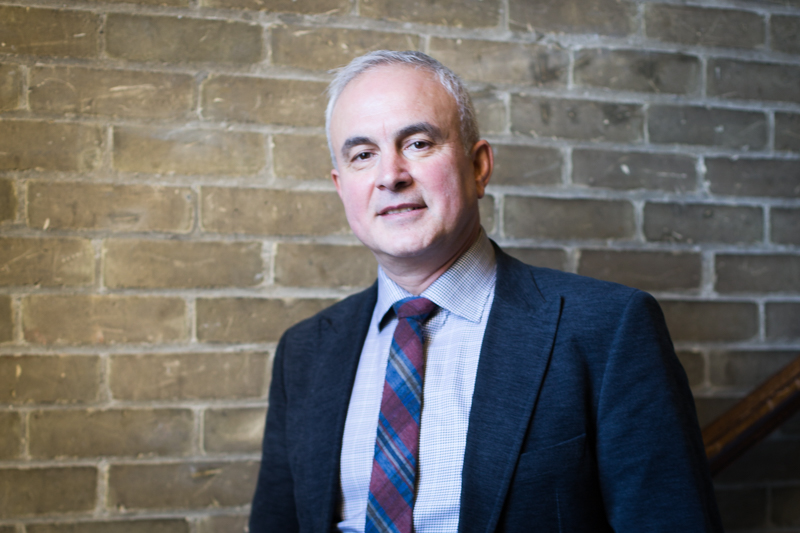 According to the Canadian Federation of Medical Students, between one-third to half of all learners experience burn out, depending on their stage of training.
According to the Canadian Federation of Medical Students, between one-third to half of all learners experience burn out, depending on their stage of training.
The Office of Health Professions Student Affairs (OHPSA) works to help equip trainees with resilience skills and provides resources to support wellness and mental health.
“Medical students are part of a curriculum that moves quickly,” says Professor Tony Pignatiello, Associate Dean, OHPSA. “If a student has to wait a month to see a counsellor, the curriculum moves on. If there’s an exam in that time, that student has essentially two choices: defer the test until they feel better or potentially fail it and ask for forgiveness later. It’s important for us to respond quickly and integrate with our students’ academic needs.”
To do this, OHPSA employs a range of strategies to meet every level of need.
RESILIENCE CURRICULUM
The Resilience Curriculum, which equips students to assess and develop their own resilience is delivered through online modules and workshops. It emphasizes the importance of reaching out for help and breaking down stigma. OHPSA developed this element of the Foundations Curriculum in collaboration with Post Graduate Medical Education and a committee of students. So far, the modules are available in the MD Program’s first three years.
Samantha Yang, a third-year medical student, helped shape this part of the MD Program as a Resilience Curriculum Coordinator. In her role, she worked with about 30 students from across all four years of the program, looked for ways to increase resilience training and helped develop and evaluate content to support that goal.
Students also played a key role in producing Monologues in Medicine, a series of videos that relate to topics in the Resilience Curriculum. The series features students, residents and physicians who share their personal stories of challenges they overcame in medical school. Clips from the monologues are integrated into the curriculum content and every year new monologues are added to the library.
“As students, we really appreciate all the effort that’s gone into developing this curriculum and mental health services,” Yang says. “But we recognize there’s a limit to the efficacy of these services based on the current health care environment. So, it’s exciting to part of the culture shift.”
The Resilience Curriculum has drawn attention from other medical schools and academic disciplines as well. OHPSA receives requests from universities looking for help to introduce similar programs.
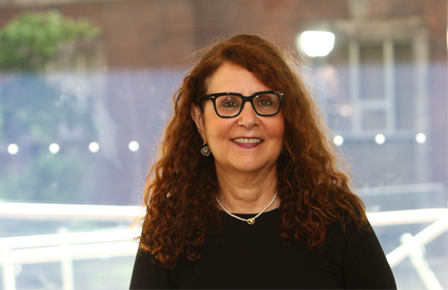 “We’re ahead of the game,” says Shayna Kulman-Lipsey, OHPSA’s Manager of Counselling Services. “I presented at an international conference, where there was a lot of discussion and research on deteriorating mental health among medical students as they move through training but there was little about what was being done to address it.”
“We’re ahead of the game,” says Shayna Kulman-Lipsey, OHPSA’s Manager of Counselling Services. “I presented at an international conference, where there was a lot of discussion and research on deteriorating mental health among medical students as they move through training but there was little about what was being done to address it.”
SUPPORT DURING EDUCATIONAL TRANSITIONS
Beyond the Resilience Curriculum, wellness is integrated into the student experience through Transition to Clerkship, a two-week course that helps learners develop the knowledge, skills and attributes to help them as they become clinical clerks in their third year of study. The course also features a session on maintaining mental health. Similar content is included in Transition to Residency, which runs during the final fourteen weeks of the MD Program.
This year, the MD Program has introduced three core curriculum days, which brings third year clerkship students back together from their hospital sites to focus on career choices, Canadian Residency Matching Service preparation and wellness and mental health.
The first session — held this past November — touched on mindfulness and the importance of healthy nutritional and sleep habits. The next two sessions are planned for 2019.
OHPSA’s work, says Pignatiello, is part of a continuum of supports available to students and learners at all levels of training. He regularly meets with his counterpart at the Post MD Program’s Office of Resident Wellness to explore opportunities to collaborate. Together, the groups organize a bi-annual Physician Wellness Symposium.
COUNSELLING SERVICES
Health professions students are welcome to meet with the office’s personal counsellors. Daytime and after-hours appointments are available and, in urgent situations, can be scheduled on a same-day basis. The service is open to any registeredmedical student downtown or at the Mississauga Academy of Medicine for as long as they need during their training, in person or remotely. Students can refer themselves for counselling,which is confidential and helps with a diverse range of concerns.
OHPSA also actively reaches out to students through Check Your Pulse. Through the initiative, students are invited to visit the office to chat about how medical school is shaping up for them. Originally offered to first-year students, Check Your Pulsegrew this year to include second-year students, too. As well, the program’s timeline has expanded to be offered throughout the fall.
“It’s a good time to check in, see if they’re experiencing academic issues or anxiety, which is quite common,” says Kulman-Lipsey. “It’s also a way to connect about other issues like whether or not students have a family doctor.”
For students who need additional support, OHPSA can provide or accept referrals to and from other services including the university’s Health and Wellness Centre or other health care providers. OHPSA counsellors can remain involved in a student’s care and liaise between the office and outside health professionals.
COLLABORATING FOR A HEALTHIER CULTURE
Earlier in 2018, OHPSA also established the Mental Health Dialog Q &A series, which features physicians speaking about their experiences with mental health and wellness.
The office also works with a variety of student-led groups who share the goal of supporting emotional well-being among learners. Among these groups is Student Health Initiatives and Education (SHINE). It promotes wellness, academic skills development and career exploration through activities like seminars, workshops and an annual wellness challenge campaign done in collaboration with the Canadian Federation of Medical Students.
“Mental health affects us all, but it’s still a topic a lot of people aren’t comfortable talking about,” says Allison Chen, SHINE’s 2T1 General Coordinator. “As medical students and future physicians, we need to take care of ourselves to take care of others. We need to create a community where it’s okay to not be okay and to ask for help.”
Other student-led organizations include ArtBeat, Meds Mindfulness and After Hours, which offers students opportunities to talk to each other about their experiences and journey through medical school.
OHPSA also works with Faculty members, who are given information about signs that might indicate a student may be experiencing mental health difficulties. These can include any deviation from a student’s usual behaviour — one example would be a usually punctual student who starts to frequently run late. Another possible sign of trouble could be when a student strays from the class norms, like scoring notably lower than class averages.
“This equips faculty to check in on students. Or faculty members can remind the student about OHPSA’s services,” says Pignatiello.
Another mechanism for checking in with students is the MD Program’s updated absences policy. Students may have planned or unplanned absences from their studies. Although there is no formal cap on the number of days a learner may take, four unplanned absences or a total of eight absences will prompt a check-in from the program. The idea is to harmonize students’ autonomy and life/work balance with concern for their wellbeing.
In addition to helping support students on an individual level, OHPSA also works to nurture a safe learning environment. In partnership with the Diversity Office and students, OHPSA is helping to improve the process to report concerns surrounding harassment and discrimination. As well, OHSPA works closely with the Office of Accessibility to help students who may need accommodations while they study.
Another collaboration between OHPSA and the Office of Post MD Education is the work being done by Pignatiello and Heather Flett, Associate Director of the Office of Resident Wellness as co-chairs of the Optimizing the Learning Environment Working Group. This initiative is an important part of advancing the Faculty’s new strategic plan, which includes the goals to improve the learning environment and advance wellness throughout the Faculty. One of the group’s first goals is to establish a unified approach to promoting a culture of respect and professionalism.
When it comes to wellness supports, Pignatiello says the services available have been like hidden gems — treasures he hopes to share as widely as his team can.

Optimize this page for search engines by customizing the Meta Title and Meta Description fields.
Use the Google Search Result Preview Tool to test different content ideas.
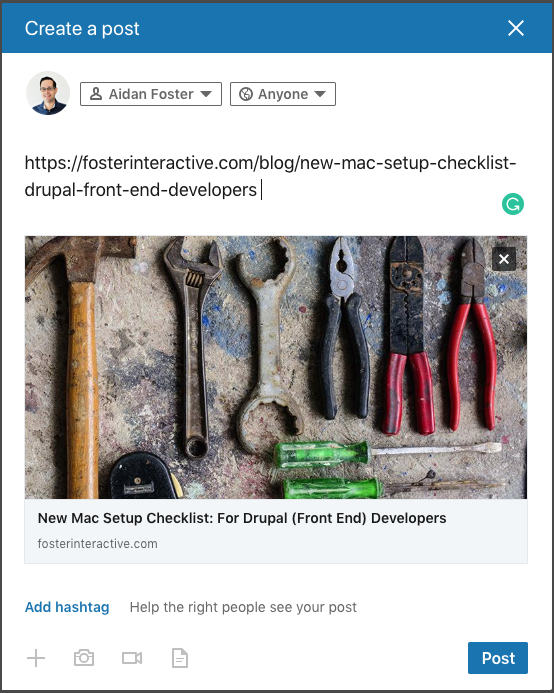
Select a Meta Image to tell a social media platform what image to use when sharing.
If blank, different social platforms like LinkedIn will randomly select an image on the page to appear on shared posts.
Posts with images generally perform better on social media so it is worth selecting an engaging image.
Erin Howe

Graduating in a Year Like No Other
From an unexpected hiatus to babysitting for healthcare workers, the past year has brought plenty of new experiences for medical students graduating this spring from the Temerty Faculty of Medicine.
But with these experiences came new skills and the discovery of a deep resiliency that the class of 2T1 will take into their medical careers.
As the cohort of 254 MD graduands prepares for what’s next — convocation celebrations, licensing exams and residency placements — class co-presidents Prem Nichani and Ward Al-far look back on a year unlike any other.
STEPPING UP
In the spring of 2020, pandemic safety protocols put the class of 2T1 on temporary hiatus from clerkship rotation. During three months of unexpected downtime, the MD students stepped up to volunteer with initiatives to support health care systems and the community. Students organized PPE collection drives, worked crisis support telephone services, filled hospital screening and public health contact tracing roles, and pitched in to offer childcare and grocery delivery services to frontline healthcare workers.
A NEW LANDSCAPE
When clinical rotations resumed in July 2020, the MD students found themselves in a medical landscape transformed by new safety protocols, new routines for health care teams and a new relationship with patients for the physicians-in-training.
Al-far provided one-on-one medical care to patients, and found himself managing the social needs of patients who couldn’t have family members nearby due to safety protocols.
“You might find yourself supporting a scared breast cancer patient who can’t have her mother with her,” he said. “That adds a lot more emotional and social responsibility to caring for people, but the difference it makes for the patient is huge."
Al-far describes the experience as “intense” but says it solidified the communication and patient advocacy skills he will carry into his future practice.
As healthcare adapted to the changing demands of COVID-19, the new protocols also gave learners an atypical view of the specialities they might be considering.
“This is a formative period,” said Al-far of the truncated Clerkship placements that give MD students a chance to experience different medical disciplines before deciding on their speciality.
The circumstances also shifted how learners prepared for residency placements. Travel restrictions meant the 2T1 class had to find new ways to explore the cities and institutions where they hoped to land residency placements.
“This is where we will spend the next five years and maybe set up our practices and our lives,” said Nichani.
Despite the challenges, MD Program Foundations director Marcus Law says the past year gave this cohort a unique opportunity to put their pre-clerkship training into practice.
“They observed how physicians learn and manage uncertainties and ambiguities,” said Law. “They also deepened their understanding of how to adapt to the unknown with new knowledge and to how to apply a health equity lens to advocate for their patients with COVID.”
“This class has developed life skills that will help them manage the next crisis,” he continued. “They’ve risen to the challenge and will be ready to tackle what comes next.”
IN IT TOGETHER
Through it all, the class of 2T1 leaned on each other, met safely outdoors when in-person visits were permitted and moved online when they were not. There were virtual town halls with faculty to keep students informed of changes and online counseling sessions offered through the Office of Health Professions Student Affairs.
The co-presidents also helped the class safely mark milestones and make new memories together. They recently hosted the first-ever virtual match party to celebrate residency matches and are preparing for an online convocation to take place Tuesday, June 15.
FUTURE FORWARD
With classes behind them, many in the 2T1 cohort are preparing for licensing exams and making relocation plans to begin their residency placements on July 1.
This period also typically offers opportunities for travel and rest, a break Nichani notes is especially needed after the intense pressures of the past year.
The co-presidents say their 2T1 classmates showed extraordinary determination and resiliency over the past year which will stand them in good stead in the future.
“Making it through these four years is a challenge itself, but with the pandemic, it’s a quite an accomplishment,” said Al-far, who will start residency in anesthesiology at McMaster University in July.
Nichani, who will remain in Toronto for his residency in ophthalmology, agrees. “Despite how hard this experience has been, it made our class stronger together and as individuals,” he said. “We’ve been through a heck of a lot.”
Vice Dean, Medical Education Patricia Houston lauded the class for their accomplishments and contributions.
“In addition to offering my congratulations the class of 2T1 on the successful completion of the MD Program, I also want to thank our newest graduates,” said Houston.
“Over the last year in particular, the class of 2T1 has stepped up to help in the clinical environment, assisted in caring safely for COVID patients and were a help to students in the other years of the program. It’s been a privilege to work with each of these students and I wish them the best as they embark upon the next chapter in their life long education journey.”

Optimize this page for search engines by customizing the Meta Title and Meta Description fields.
Use the Google Search Result Preview Tool to test different content ideas.

Select a Meta Image to tell a social media platform what image to use when sharing.
If blank, different social platforms like LinkedIn will randomly select an image on the page to appear on shared posts.
Posts with images generally perform better on social media so it is worth selecting an engaging image.
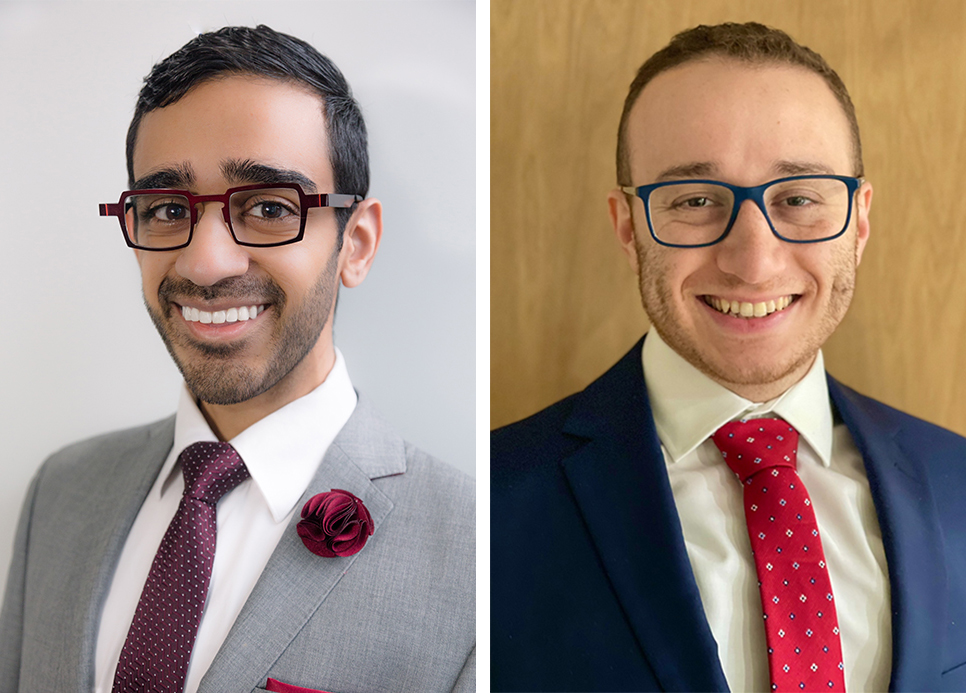
Talk to Us: Addressing Learner Mistreatment
Over the past year, the MD Program introduced new policies and procedures to help learners who experience or witness mistreatment or unprofessionalism in the learning environment. Though there are multiple options, they all begin with the same first step: Talk to Us.
Professor Reena Pattani, the MD Program’s Director of Learner Experience, Professor Tony Pignatiello, Associate Dean, Health Professions Student Affairs and the academy directors are all designated program leaders working to help students feel safe to reach out and access support through negative experiences.
Recently, Pattani spoke with writer Erin Howe about the new processes to address learner mistreatment.
It's been nearly a year since new learner mistreatment policies and procedures were introduced. Have you begun to see their impact?
Previously, learners faced numerous barriers to coming forward, not just fears of retaliation, but also a lack of institutional clarity about what constitutes mistreatment and the pathways for coming forward. Our first and most important goal was to lift those barriers and make it as easy as possible for learners to access resources and support.
So far, the number of disclosures and reports that we’ve received exceeds historical averages. We suspect this is not because there are more occurrences of mistreatment, but rather because we’re building up systems for learners to reach out and share their stories. We're grateful to all the learners who have trusted us with their disclosures, because we know coming forward isn’t easy.
Almost uniformly, learners tell us they don’t want what happened to them to happen to someone else. That’s inspiring to us because part of their motivation in coming forward is a desire to see a culture change in our shared community.
What’s the most important thing for learners to know about the mistreatment policy and procedures?
Talk to us — there’s no need to struggle through a negative experience alone. Medical training is already so rigorous and we want to create a culture that allows people not just to survive, but to thrive.
We hope the threshold to reach out will be low and you’ll connect with us even if you’re not certain if what you witnessed or experienced was mistreatment. We'll work with you to unpack what happened and review potential options to help you decide how best to proceed in a way you're comfortable with and makes sense for your personal goals and values.
What options are available to students who may have experienced mistreatment?
Learners can discuss, disclose or report anything they’re concerned about. These are separate actions and learners don't need to know their exact intention when they first come forward. We set our framework up in this way to make the process for coming forward less daunting and to ensure we lift barriers for learners coming forward.
Discussion allows the learner to unpack or debrief something negative. They don't need to know in advance if it constitutes mistreatment. If a learner feels unsettled by something, we're here to discuss it and understand the impact on them.
Learners can also come forward to disclose, which is where learners wish to discuss something with the aim of understanding their options.
Finally, learners can report. This means the learner has disclosed something and selects the option to raise their concern to leadership’s attention for formal institutional review.
Historically, learners who experienced or witnessed negative things in the learning environment often suffered silently, and that shouldn't be the case. We also know the impact social identity may have on experiences of mistreatment, given that our own data and the literature show learners from equity-deserving groups carry a disproportionate burden of negative experiences. We’ve been working closely with Anita Balakrishna, Director of Equity, Diversity, and Inclusion (EDI), to ensure the systems we’re building are informed by anti-racism, anti-oppression, and EDI principles.
We also have a Learner-to-Learner Mistreatment Working Group led by Dr. Hala Muaddi and Nader Chaya advising on how best to support this nuanced form of mistreatment.
What might a learner expect during their first meeting with the Learner Experience Office?
We’ll talk about the logistics of what we can provide. Among them is talking through the differences between discussing, disclosing, and reporting. The key point is that the learner doesn't have to decide what to do at the first meeting, sometimes it takes a few meetings and that's okay. There won't be any pressure from us. We just want to make sure learners know we're there for them and that learners are aware of the supports and resources that exist to address their concerns if they wish to report.
Even if they choose not to make a report, discussions and disclosures still have a positive impact: they provide us insight into what's happening across the learning environments and may prompt consideration of systems-level interventions that might be helpful. We also hope the simple act of discussing relieves the learner of some burden.
If a learner saw something happen to a colleague, could they still share that with you?
Learners can come forward with any negative experience they've personally experienced or witnessed. The barriers to coming forward are often similar whether a learner experienced or witnessed mistreatment, and all involved face negative impacts.
Everything begins with a safe and confidential discussion to better understand what happened and possible next steps.
What kinds of barriers have kept learners from coming forward in the past?
A lack of clarity about what constitutes mistreatment and what learners can do about it has been a key barrier. This is why we redesigned our webpage interfaces, including updating our Student Assistance button. This was informed by extensive consultation with learners to ensure our new Student Mistreatment webpages are accessible and user-friendly.
Many learners have also given feedback on our education and communications activities. Several learners including Jordi Klein, Dr. Amr Hamour, Darby Little, Neha Malhotra, Mary Oluwasemipe Oni and Gagandeep Singh played key roles in designing a workshop on learner mistreatment for the 2T3 class.
Other barriers are concerns about retaliation and privacy. There are a few ways we can try to address these concerns. If it’s possible to de-identify a report, and that's the learner’s preference, we can work with them to do that. We may also delay the escalation of a report for formal review, by waiting until the learner completes a rotation, for example, if that’s their preference. And finally, if we escalate a report to the attention of a leader, we always make it clear that the leader should inform the individual responsible for the negative behavior that any retaliation or retribution would be unprofessional and would be considered its own form of mistreatment. If retaliation were found to have occurred, this would be subject to its own reviews and disciplinary actions.
How are you also working to ensure increased transparency and accountability around these issues?
We always close the loop with individual learners who come forward to let them know their concerns were reviewed with utmost seriousness by leaders within the institution. We’re also committed to publishing anannual professionalism report, which includes de-identified, aggregated information about the disclosures and reports we’ve received. Our goal is to keep our Temerty Faculty of Medicine community aware of the types of issues arising and the outcomes of these incidents in a way that protects everyone’s privacy.
We also want to keep improving on our processes and are developing ways for learners to evaluate our programs and give us feedback on how we can do better.
Finally, our office is available to faculty and other leaders who may receive a disclosure from a learner. Our hope is that they’ll reach out to us to learn more about how to refer learners or review learners’ concerns in ways that align with our processes and strive for learner safety and support.
How exciting is it to see this culture change underway?
It’s both exciting and inspiring, for two reasons.
First, it’s been great to see such an authentic institutional commitment to leading and enabling this culture change, including the vision that has been articulated by Professors Patricia Houston, Tony Pignatiello and Glen Bandiera.
Second, it's exciting because our learners are paving the way forward and shaping this agenda. I’ve learned so much from working directly with the many learners who have played a leadership role in building up these processes and implementing strategies for education and communication. Some of the learners playing a leadership role on this issue include Nader Chaya, Lina Elfaki, Safa Majeed, Lyon Qiao and Kabisha Velauthapillai from the MD Program, and Drs. Leora Branfield-Day, Samik Doshi, Amr Hamour, Justin Lam, Hala Muaddi, Parth Sharma and Aisha Yusuf Ibrahim from Postgraduate Medical Education.
All of this has shown me that even in well-established institutions, there can be room to co-create systems. Everyone within our faculty has a role to play.
Although we’ve spoken a lot about learner mistreatment, our near-term plans also include developing strategies, in partnership with Professor Pier Bryden, Senior Advisor for Clinical Affairs and Professional Values, to promote the positives and shine a spotlight on the exemplary citizenship behaviours that unfold around us every day. Our hope is that this will help showcase the positive cultural norms that need to be the standard for our learning and working environments.
More information about learner mistreatment can be found here. Resources for learners in Postgraduate Medical Education can be found here.

Optimize this page for search engines by customizing the Meta Title and Meta Description fields.
Use the Google Search Result Preview Tool to test different content ideas.

Select a Meta Image to tell a social media platform what image to use when sharing.
If blank, different social platforms like LinkedIn will randomly select an image on the page to appear on shared posts.
Posts with images generally perform better on social media so it is worth selecting an engaging image.
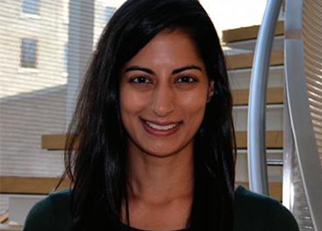
Med School Orientation Stressful for Some Diverse Students: U of T Study
A new study led by the University of Toronto and University Health Network reveals that medical school orientation can be a source of lasting tension and uncertainty for students, particularly those of diverse backgrounds.
Students entering medical school are quickly introduced to many of the social and professional aspects of the medical profession. Orientation is meant to be an informative period that welcomes students and sets the stage for a positive medical school experience.
Unfortunately, if inclusion is not a priority in its design, orientation can cause students stress and uncertainty as they begin to develop their professional identity.
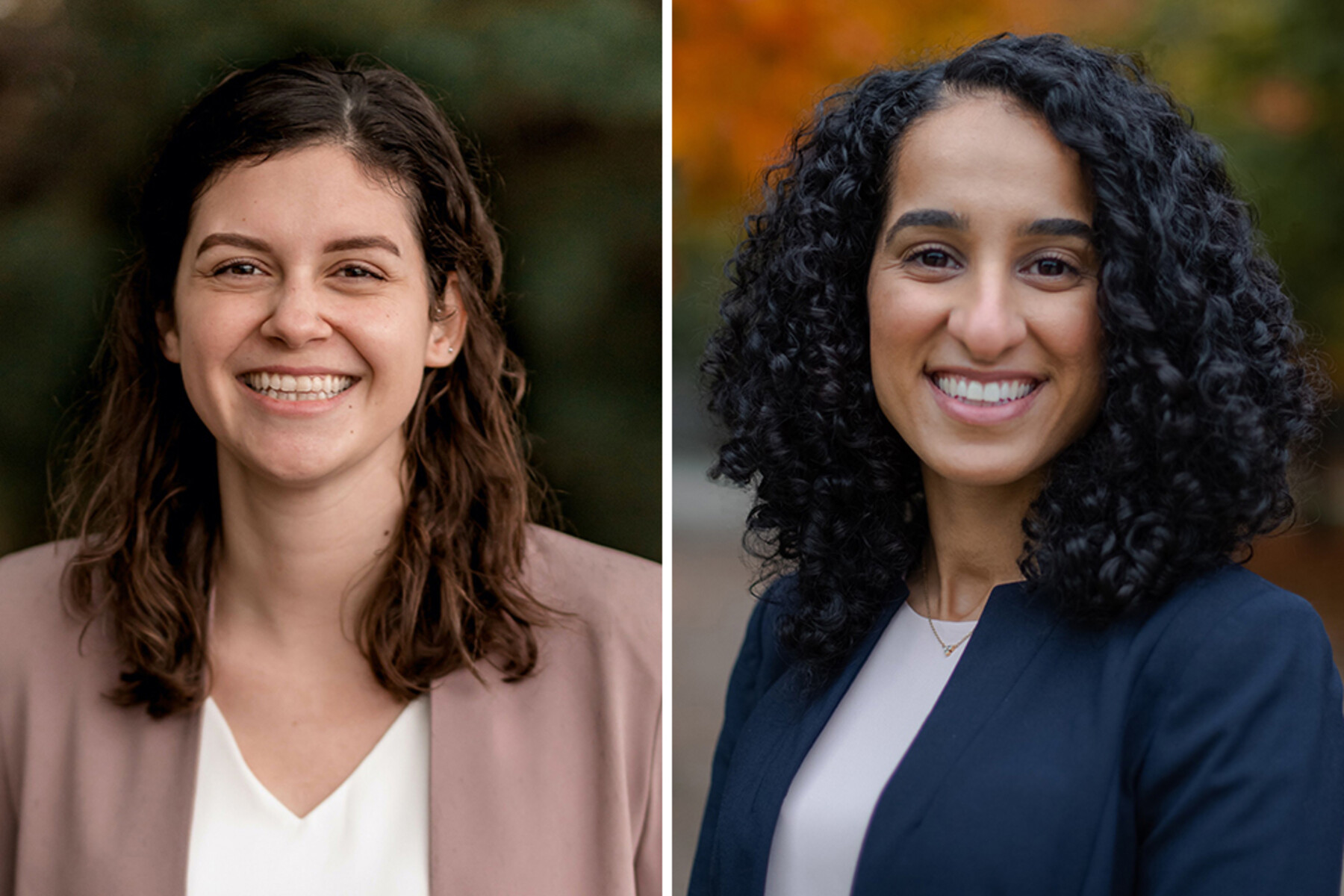
To understand the source of this stress and uncertainty, fourth-year medical students Asia Van Buren and Wid Yaseen explored student experiences during medical school orientation. Van Buren and Wid Yaseen were mentored by Marcus Law, director of foundations for the MD Program at the Temerty Faculty of Medicine.
The research team interviewed 16 students from five Canadian medical schools. From these interviews, several issues emerged that were related to students' personal identities and feelings toward their medical school orientation.
Students described being indirectly introduced to the identity of the dominant medical professional (e.g., white, heterosexual, high socioeconomic status and a science-based education background). Students felt tensions when they were introduced to this identity, particularly if it differed from their own. These tensions were especially distressing and long-lasting for students from underrepresented groups.
"Students from underrepresented groups were welcomed into medical school, but once they arrived, they felt pressures to hide their unique qualities and backgrounds in order to match what they thought a doctor looks like," says Law, who is also a professor of family and community medicine at Temerty Medicine and an education investigator at The Institute for Education Research at UHN.
Students also described sensing a gap between their school's investment in diversity and the way that it approached inclusion. Some students felt that their faculty voiced the importance of including students of all backgrounds, but their words were not backed by actions.
The study indicates that medical schools can achieve diversity, but still fall short when it comes to ensuring that everyone feels like they belong.
"We encourage medical schools to take a second look at their orientation programs to ensure that they are inclusive of students with diverse backgrounds and experiences, particularly those from marginalized groups," says Law. "Increasing diversity is not enough.
"Schools need to safeguard inclusion from the moment that students walk through the doors."
This work was supported by The Institute for Education Research and the UHN Foundation.

Optimize this page for search engines by customizing the Meta Title and Meta Description fields.
Use the Google Search Result Preview Tool to test different content ideas.

Select a Meta Image to tell a social media platform what image to use when sharing.
If blank, different social platforms like LinkedIn will randomly select an image on the page to appear on shared posts.
Posts with images generally perform better on social media so it is worth selecting an engaging image.
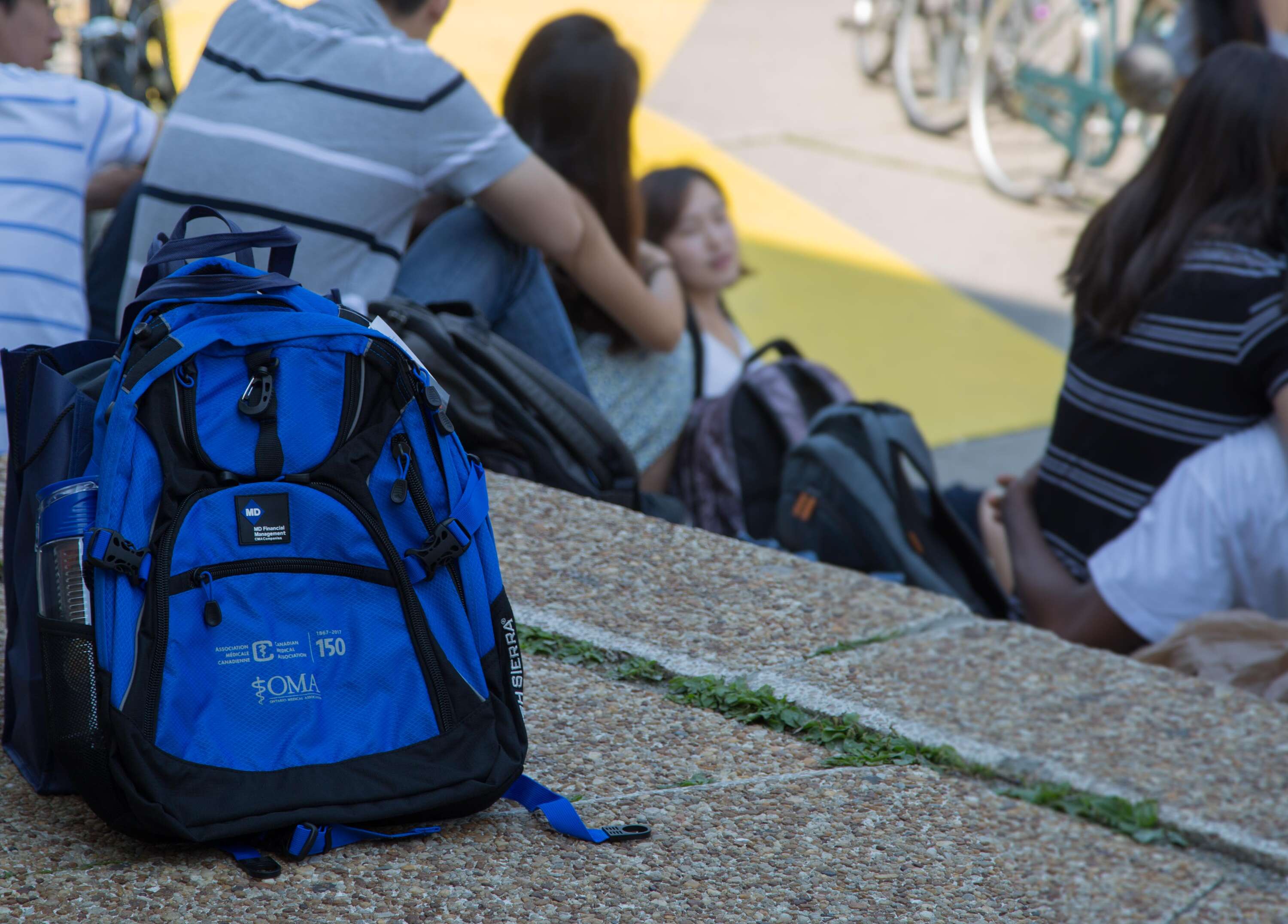
Faces of U of T Medicine: #FrancoMed
A group of MD students in the Temerty Faculty of Medicine is supporting learners across Canada working to strengthen their medical French language skills.
The University of Toronto Medical Communauté Francophone (UTMCF) is helping create an online educational platform called FrancoMed. The platform is expected to launch on the Association of Faculties of Medicine of Canada (AFMC) website in the next couple of months.
The team has contributed over 400 vocabulary terms, 10 papers with more than 50 multiple choice questions per section and 20 podcasts and videos to assist students in improving their French medical speaking and writing skills.
UTMCF members Melanie Elhafid, Tatiana Yeuchyk and Elya Quesnel recently told writer Erin Howe more about the initiative.
What is FrancoMed?
FrancoMed is a centralized online program for learning medical French. There are three main sections: medical vocabulary; written comprehension; and audio comprehension.
After completing all exercises and the associated quizzes, successful participants will receive a certificate from AFMC and U of T.
FrancoMed is open to all Canadian students, and will benefit people interested in using medical French as future physicians.
What inspired the creation of FrancoMed?
In Canada, more than 20 per cent of people speak French as a first language, and over one million people live in official language minority communities outside Québec. In many of these places, healthcare in French is limited or even absent, which can reduce quality and access to care, despite speaking an official language.
One targeted approach to address this gap in care is to invest in growing the number of French-speaking physicians across the country, starting in medical school.
In recent years, several resources have been made available to help learners improve their clinical French, from vocabulary lists and podcasts to videos of history-taking in French. But there wasn’t an organized program with targeted lessons and exercises in one place. This creates a serious challenge for a medical students and residents looking to balance their stringent program demands with a desire to build their French medical skills long term.
Who is helping make FrancoMed a reality?
It took a big team to make this happen! Our Temerty Medicine colleagues Kwasi Jnr Nkansah, Omar Ghabala, Rahna Rasouli, Rehona Zamani, Misha Dhuper, Clemence Ongolo Zogo and Alexi Gosset played an important role in the initiative. Armand Bahabi, a recent graduate of Polytechnique Montréal’s engineering program, recorded the podcasts and designed the website. FrancoMed was also developed in collaboration with Ike Okafor, Temerty Medicine’s senior officer, service learning and diversity outreach and Aida Banghoura, project coordinator at AFMC. We also had help from the University of Ottawa’s office of Francophone Affairs.
Are there many French speakers in the Temerty MD Program? Has this helped the development of FrancoMed or helped highlight the importance of creating this kind of support?
There are many students, both current and past, who are Francophone or Francophile in the Temerty Medicine community. The UTMCF organizes opportunities for students to practice their French in the context of medicine. These events usually attract 10 to 15 students from the first two years of the program. More broadly, there are hundreds of French-speaking medical students studying at Anglophone faculties of medicine across the country.
What is your hope for FrancoMed?
We’re extremely excited that FrancoMed will be available on the AFMC website, nationwide, and to any students in medicine and the healthcare professions who want to improve their French medical skills.
We expect to launch FrancoMed in the next couple of months. Our biggest hope is that FrancoMed becomes a well-known and established resource for anyone interested in growing their French listening and reading comprehension, as well as their French medical vocabulary. Ultimately, this would allow FrancoMed to become a continuously growing resource to support medical learners across Canada and improve access and quality of care for francophone minority populations in Canada.
What’s next for FrancoMed?
In the future, we’re excited to set up a committee of students who will be in charge of FrancoMed together with AFMC. This committee will be open to any interested student from faculties of medicine across Canada. It will be an exceptional opportunity for Francophone and Francophile future physicians to collaborate on a national scale.
What ties, or past experiences, have the members of FrancoMed have had in French prior to pursuing this project? How did those motivate them?
All the students working together to create FrancoMed are Francophone or Francophile. Some students studied in France prior to medical school, others are bilingual and many have experience advocating for better Francophone resources in medicine to increase access to care for all patients. We’re all eager to create a learning platform to benefit all students with a desire to use French in their future clinical practice.

Optimize this page for search engines by customizing the Meta Title and Meta Description fields.
Use the Google Search Result Preview Tool to test different content ideas.

Select a Meta Image to tell a social media platform what image to use when sharing.
If blank, different social platforms like LinkedIn will randomly select an image on the page to appear on shared posts.
Posts with images generally perform better on social media so it is worth selecting an engaging image.
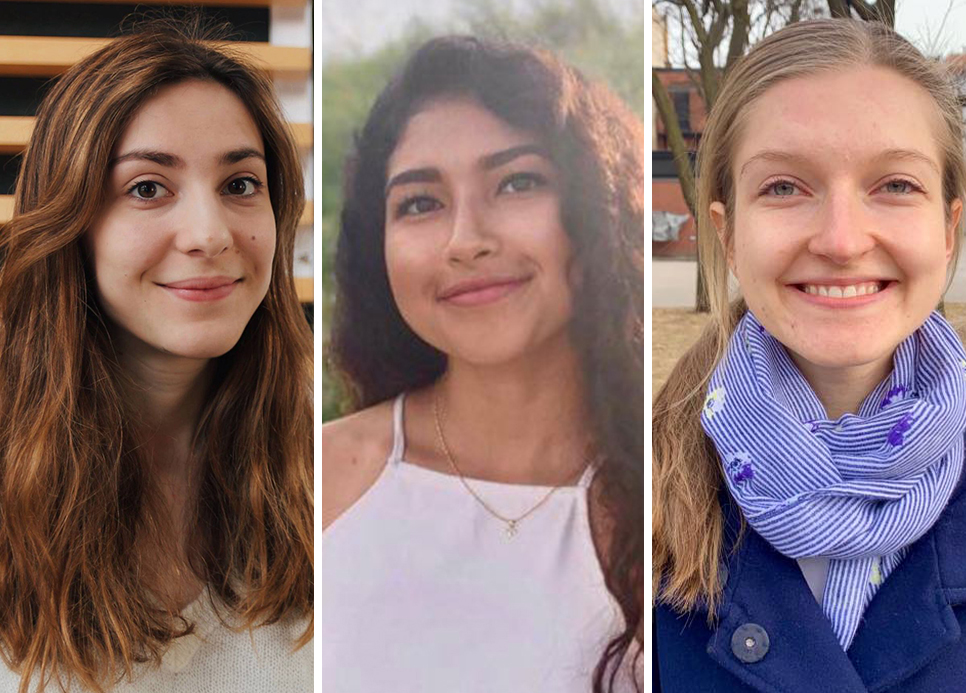
Children’s book helps kids learn how to prevent COVID-19 spread
Two students at the Temerty Faculty of Medicine are helping kids learn about COVID-19 prevention through a new book.
Sabrina Wang, a first-year MD student and Nairy Khodabakhshian, a Master’s student in the Institute of Medical Science (IMS), co-wrote the story with Jenny Zhu, a second-year MDstudent at McMaster University.
The book – Ronnie Bear’s Health Scare: A Children’s Book on COVID-19 Safety – hasrhyming text and colourful illustrations to tell the story of a young bear’s experience with COVID-like symptoms.
The students self-published the book.
Proceeds from the book will fund the donation of copies of the book to pediatric hospitals across Ontario, and schools in communities impacted by COVID-19.
They recently spoke with writer Erin Howe about their book.
What inspired this project?
Sabrina: I used to volunteer at children’s hospitals where I would read to the kids during my shifts, and I saw how happy it made them.
Since I like drawing, I wanted to illustrate my own book for them.
I reached out to Jenny, who enjoys writing and has a background in clinical pediatric research.
Nairy, who has extensive clinical pediatric experience, has also worked with book sales and publishing.
Given our shared interests and passion to give back to our communities, we worked together to develop a children’s book.
Can you tell us more about the book?
Jenny: Our book is geared toward kids between 4 to ten years old.
The story focuses on a young bear, who learns about how to prevent illness for himself and the friends and family around him, by handwashing, social distancing, and wearing a mask.
Growing up, I loved reading Berenstein Bears and Little Bear books — they were the inspiration for the main characters in our book.
We hoped that friendly, relatable animal characters could help convey key lessons about COVID-19 precautions in a memorable way.
We also wanted to emphasize the concept of social responsibility by highlighting Ronnie Bear’s wish to stay safe to protect his grandfather, parents and classmates.
We hope to help kids see how their actions might impact others and transform their fear into positive motivation.
Who has helped support this initiative?
Nairy: This book was developed over six months through extensive collaborations and a revision process with several medical and health care students, as well as work with Ronald McDonald House Charities and people in publishing programs.
We also received support from Dr. Stacey Bernstein, Dr. Tanvi Agarwal, and Dr. Vitor Guerra.
Additionally, we consulted with parents and teachers to ensure that our book was conveying the story in an inclusive, empathetic and understandable way.
Colleagues at Temerty Faculty of Medicine helped us develop a free list of links to COVID-19 resources like educational videos and games, and information for parents about food security, physical activity, accessing mental health services and vaccinations during the pandemic.
Who has the book impacted?
Sabrina: Since publishing in January, we have sold more than 200 copies of the book and won an award for our book.
We were also able to deliver our first round of books to Ronald McDonald House in Toronto and several pediatric hospitals. Various IMS faculty are also sharing the book.
Our book sales have expanded internationally.
It is such an incredibly heartwarming feeling to know that what had started out as a creative idea back in 2020 is now a tangible book able to positively impact children and their families.

Optimize this page for search engines by customizing the Meta Title and Meta Description fields.
Use the Google Search Result Preview Tool to test different content ideas.

Select a Meta Image to tell a social media platform what image to use when sharing.
If blank, different social platforms like LinkedIn will randomly select an image on the page to appear on shared posts.
Posts with images generally perform better on social media so it is worth selecting an engaging image.
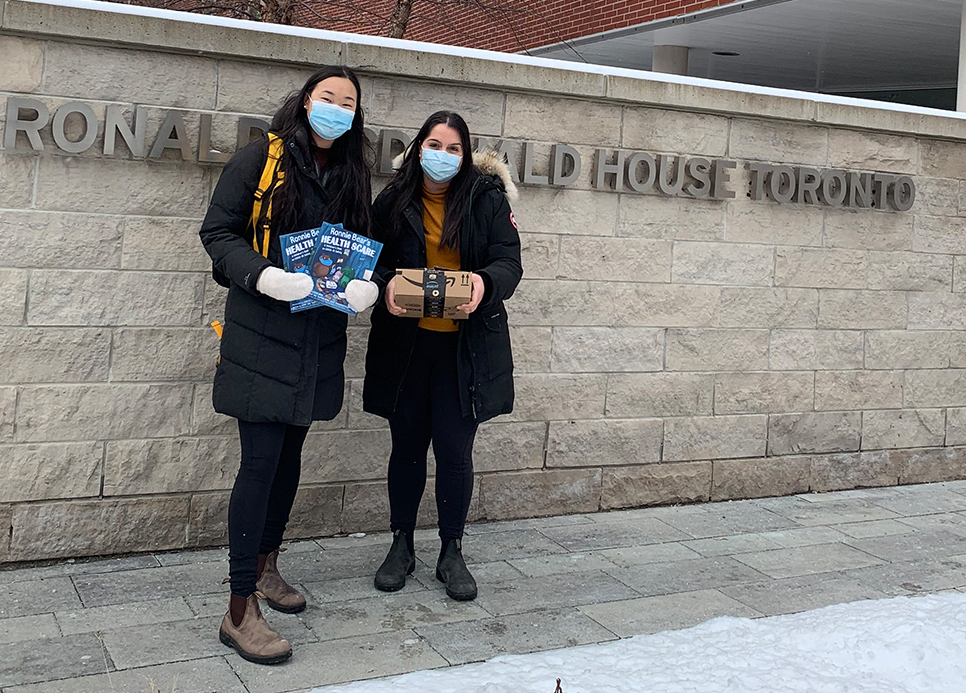
Fortifying the Foundation of Health Professions Education
Professor Nicole Woods wants to see more expertise from fields beyond the basic sciences incorporated into medical education.
Traditionally, the study of medicine has focused heavily on disciplines like physiology, biochemistry and anatomy, says Woods. Though it’s a strong foundation, she believes it could be enhanced with a greater emphasis on knowledge from fields like psychology or anthropology.
In her role as the Richard and Elizabeth Currie Chair in Health Professions Education Research at the Wilson Centre — an appointment she began on January 1, 2021 — Woods works to embrace multiple disciplines and rethink what kinds of knowledge are viewed as foundational to medical practice.
“If the role of basic science is to help you understand “why” — which is what my research shows — any form of knowledge that helps people understand why they do what they do could be considered a ‘basic science’ and could be foundational to medicine,” says Woods, who is also the Wilson Centre’s Associate Director of Operations and an associate professor in the Department of Family and Community Medicine.
Woods sees opportunity to incorporate understanding from other disciplines into medical education. She’d like other disciplines to play a greater part in shaping training for future health care practitioners.
“What about integrating the behavioural, cognitive or social sciences? If you have a physician who has a really good understanding of social dynamics, sociology and other areas like these, how would that change what they do with their patients tomorrow? That’s a big opportunity for us,” she says.
Woods, who is also the Director of The Institute for Education Research at University Health Network, holds a PhD in cognitive psychology. Her work focuses on human memory and categorization.
Just as Woods’ work broadens the range of subjects that could be considered essential to medical education, her Excel Lab attracts students from a similarly wide range of programs. The lab works to develop new ways of thinking about how to design curriculum and teach future health care providers.
Graduate students in the lab, which Woods leads with professor Maria Mylopoulos, come from disciplines that have included dentistry, pharmacy and audiology. This academic diversity is one aspect of work that excites Woods.
“We’re all working to develop models of expertise and ways to build experts, so I get to collaborate with people who I wouldn’t have a chance to interact with in a siloed program where everyone is in a single field,” Woods says.
“This work speaks to people across many professions. Cognitive psychology is about the everyday human experience and reasoning. And when people enter professional programs and move into the professional realm, their minds don’t fundamentally change. They just think about different things. So, as long as I’m studying the process of thinking, I can talk to anybody. And it’s a lot of fun doing that.”
In addition to expanding the scope of health professions education research, Woods is also working to make the field more inclusive.
“It’s important for young Black people to see that science is possible for them. I want to create space for them to be here with me,” says Woods. “That’s part of my idea for the chair. I hope down the line there will be young Black men and women who know this is an option for them as a career. That they can be an education scientist or an institute director. We can be leaders in science and medicine.”
The inspiration for a career in education scholarship was sparked by one of Woods’ PhD supervisors – and current colleagues — Geoff Norman, a professor of clinical epidemiology and biostatistics and affiliated scientist at the Wilson Centre.
The two met when Woods was a third-year undergraduate student in one of Norman’s classes at McMaster University. He quickly noticed Woods’ talent and welcomed her to do an independent study in his lab.
Norman says he was not surprised to learn of Woods’ appointment to the Currie Chair.
“In graduate work, students often follow the lead of their supervisor, and create studies that are an extension of the program. Dr. Woods really opened up a new line of research that she has continued to the present day,” says Norman.

Optimize this page for search engines by customizing the Meta Title and Meta Description fields.
Use the Google Search Result Preview Tool to test different content ideas.

Select a Meta Image to tell a social media platform what image to use when sharing.
If blank, different social platforms like LinkedIn will randomly select an image on the page to appear on shared posts.
Posts with images generally perform better on social media so it is worth selecting an engaging image.
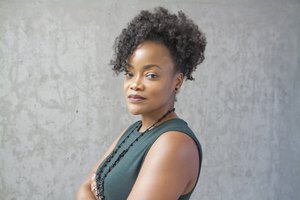
Women’s Health Site Combats ‘Cracks in the Health Care System’
Three women from the Temerty Faculty of Medicine have created an online video series and information forum focused on women’s health, in response to challenges posed by the COVID-19 pandemic.
The forum – known as Women's Health Education Made Simple (WHEMS) – destigmatizes topics like pregnancy loss, mental health, and period health.
The group has produced more than 20 videos to date featuring health care professionals including obstetricians, gynaecologists, and psychiatrists who combat popular stereotypes.
The goal of the initiative is to debunk health myths and stop misinformation, say WHEMS’ founders Dr. Modupe Tunde-Byass, an assistant professor in the Temerty Faculty of Medicine’s Department of Obstetrics & Gynaecology and President of Black Physicians’ of Canada, Dr. Tanzila Basrin, a family and emergency doctor and Temerty alumna, and Salwa Farooqi, a fourth-year student in the MD program.
In a recent conversation, the founders shared their perspectives on why the project was needed with writer Gabrielle Giroday.
Why did you create this forum?
Farooqi: In March 2020, when the pandemic hit, medical students weren’t able to attend in-person classes for four months. I wanted to do something meaningful.
Due to changes caused by the pandemic, a lot of clinics were being transferred online. Medical professionals were changing their clinic schedules or having to reduce in-person appointments.
Around this time, one of my close friends told me she was pregnant and sent me an image of her first ultrasound. She told me she was anxious about testing and follow-ups during the COVID-19 pandemic.
My friend’s anxiety inspired me to think about how the health care system could better support pregnant women and their families during the pandemic, and help alleviate their stressors through sharing trusted information.
I reached out to Dr. Tunde-Byass, who I knew from my clerkship at the North York General Hospital, where she’s a staff obstetrician-gynaecologist. During my core rotation at the hospital, she mentored me and took me under her wing.
I then reached out to Dr. Basrin after seeing her online videos about the pandemic. Both women wanted to help.
In May 2020, we launched WHEMS videos on YouTube and Facebook. In August 2020, we launched the WHEMS website and Instagram site.
Now, we have nine members of WHEMS led by the three of us. We're all BIPOC women.
What are the barriers you’re trying to address through this initiative?
Tunde-Byass: Some barriers that existed, and still exist, have to do with language, short visits and the technological barriers of telemedicine.
The pandemic has caused disruptions to the way we all provide health care. Encounters between doctors and patients in offices are limited and short.
Patients often can’t bring their partners or their families to their appointments. In the second wave of the pandemic, we’re seeing the cracks in the health care system.
We also know there are barriers in BIPOC communities in terms of accessing health care systems. Access for BIPOC people can be very limited.
With our initiative, we wanted to create accurate, evidence-based information that people could access online when they had questions.
How have you seen a knowledge gap about women’s reproductive health impact the health care system?
Basrin: What I have seen, as a family and emergency doctor, is that during appointments we’re not always able to answer every question a patient may have, especially during a pandemic.
What I realized is that a knowledge gap not only disempowers patients, it encourages people to seek out information on Google and other online sites. When this happens, it can be hard to differentiate online what’s accurate and what’s not. If I wasn’t a doctor, I would have no idea how to look for good and bad information.
Look at topics like period health – this is something that impacts every woman, but not something that is talked about. I have seen women come in thinking that a three month long period is normal, since that’s all she has known.
One of the cornerstones of WHEMS is that we want to be evidence-based and patient-centred. We don’t use big words. We try not to use medical jargon. We’re trying to really get feedback from family and friends who are not in medicine about what’s easy to understand.
We want to empower women with knowledge so that they can advocate for their health and better recognize when to seek care.
What are some future areas you’d like to focus on?
Tunde-Byass: In the future, our project will address vaccine hesitancy in Canada and how to convince and encourage people that vaccines are safe.
For me, it’s important to focus on social responsibility, and to acknowledge how COVID-19 has affected the BIPOC community. There is a significant disparity in the way COVID-19 has impacted the BIPOC community, in terms of the rate of deaths and hospitalizations.
The pandemic heavily affects people who are low-wage workers and essential workers, who may have no sick pay and who have to go to work, whether they like it or not.
In the long term, we still have to deal with the social determinants of health, like income, education, housing and employment. The disparities are ingrained in our health system, but exposed by the pandemic. If we can correct this narrative now, we’ll have a more fair and equitable system.
Our initiative gives patients fair and unbiased information in areas that might not typically be talked about, so they can make informed decisions.
When you empower women, you empower all of society.
How has this initiative emphasized the importance of mentorship?
Basrin: I come from a South Asian family. In my experience, which many BIPOC women may be able to relate to, I was encouraged to prioritize balancing my work life with family, more than my male counterparts.
For this reason, I was thought I should choose the least busy schedule.
So, I put away my passion for emergency medicine, over fears about how shift work would impact my family or how I’d be able to manage my life outside medicine. The fear took away my initial urge to apply for emergency medicine.
These worries sound ridiculous to me now, but they did subconsciously impact me.
However, this is where mentorship changed the course of my career.
During medical school, I learned about medical education and leadership from my mentor, Dr. Parisa Rezaiefar.
During residency, I was inspired by another mentor, Dr. Walter Himmel, who urged me to apply to a fellowship for emergency medicine.
He still mentors me, and I’m now doing my three-month emergency medicine fellowship, called the SEME program.
In this initiative, Dr. Tunde-Byass continues to inspire me with her knowledge and leadership skills, further debunking the limitations that I had once created for myself.
Farooqi: I think for me personally mentorship has been a really, really important part of career development, and pursuing my goals.
I come from a background where I have no physicians in my family. I grew up in a homogenously non-affluent immigrant neighbourhood.
I’m an immigrant myself, so growing up I didn’t have many role models working in medicine around me. My mother and father used to work in blue-collar jobs. They still do.
I didn’t have the same opportunities that a lot of people in medicine would.
So, for me, it was important to find people that could empower me and help me find the direction I wanted to go in.
When I started medical school, I was in search of mentorship that showed how we, as BIPOC women, could carve out an identity for ourselves in medicine.
When I met Dr. Tunde-Byass and saw how she functions in a clinical setting and a leadership setting, it was very inspiring for me.
To see her function at so many levels in the hospital, while making a meaningful impact in the lives of her patients, really moved me.
I was excited to see a person of colour in such an important role.
All three of us have links to North York General Hospital, which served as an important foundation for us and how we met.
Dr. Basrin is closer in age to me. I think she provides the other aspect of mentorship – related to school and education, and how to navigate clerkship and residency. She’s taught me how to have difficult conversations and advocate for myself.
Both of them have listened to me and validated my ideas. I think mentorship has had a life-changing effect on me.

Optimize this page for search engines by customizing the Meta Title and Meta Description fields.
Use the Google Search Result Preview Tool to test different content ideas.

Select a Meta Image to tell a social media platform what image to use when sharing.
If blank, different social platforms like LinkedIn will randomly select an image on the page to appear on shared posts.
Posts with images generally perform better on social media so it is worth selecting an engaging image.


Faces of U of T Medicine: Jackie Tsang
A new initiative at the University of Toronto’s medical school is giving a voice to people from marginalized backgrounds and helping students deepen their understanding of future patients.
The Pen-pal Project matches medical students with community members who’ve experienced homelessness. The pairs exchange a series of letters, which bolster compassion among the learners while empowering their pen-pals.
Jackie Tsang, a third-year medical student and Vice President, Education in the Social Justice for Medical Education club spoke with writer Erin Howe about her involvement with the Pen-pal Project and how it’s being adapted to include more participants and the broader curriculum.
How does the Pen-pal Project work?
My third-year colleague Ivona Berger and I partnered with HouseLink, which provides supportive housing and other programs to people with mental health and addiction issues. In the first letter last fall, eleven students asked their pen-pals about their life circumstances and past experiences with medical professionals. Over the course of the month-long pilot, participants developed meaningful relationships with one another.
What inspired the Pen-pal Project?
I have lived experience with financial and housing insecurity. My parents are immigrants and throughout their lives, they’ve faced discrimination because of their low socio-economic status. I’ve always recognized this as part of my identity, but didn't realize the gravity of it until I reached postsecondary education.
While I was in university in London, Ontario, I noticed a glaring financial disparity between myself and most other students. I was also shocked by the degree of apathy toward the homeless population. I started a local branch of the non-profit organization HashtagLunchbag, which brings together volunteers to assemble lunch bags for people experiencing housing insecurity. There are a lot of misconceptions about people in these circumstances and I thought HashtagLunchbag would help address and dispel them. The program also became the impetus for me to apply my interest in inner-city health in my role as a medical student.
Ivona and I inherited this project from fourth-year medical students Abirami Kirubarajan and Seiwon Park, who came up with the idea of using a pen-pal program to teach our peers about empathy for homelessness.
How has this experience changed the way participants think about homelessness?
Through the letters, students got to read about the varied nature of their pen-pals’ personal experiences and the impact of different life events that were beyond their control. Things like a financial crisis, mental health issues or traumatic childhood events can contribute to precarious housing — things no one would choose for themselves.
The students also developed some new communication skills. For example, some students were paired with pen-pals whose first language isn’t English and had to tailor their writing to their pen-pal.
Participants also said they developed stronger advocacy skills by learning about different resources and people who advocate for their pen-pals. Students also said they gained better insight into how their actions and words as future medical professionals can have a profound impact on somebody's life and relationship with the healthcare system.
What are the next steps for The Pen-pal Project?
We’re working with Professor Fok-Han Leung, director of the health in the community curriculum for the MD Program, and experiential learning lead Roxanne Wright to integrate The Pen-pal Project into the community-based service learning curriculum. It's a social distancing-friendly way to engage with the community, so it's timely that we've just finished our pilot and are ready to hit the ground running with it.
We’re also looking to expand the program to include people from other disadvantaged or marginalized groups who may have intersecting factors that influence their health. In the future, we hope to pair groups of student participants with community members to exchange letters throughout their second year of medical education.
We’ll also share students’ experiences with the pilot through a qualitative study we wrote to highlight the project’s themes, and which we have submitted for publication. I'm also scheduled to give an oral presentation on the project at the Canadian Conference for Medical Education as well as one at U of T’s Medical Student Research Day, which is a huge privilege.
How does it make you feel to see this project grow to include more students in a more formal way?
Honestly, this is beyond what I ever thought possible. My goal was to educate my peers about homelessness health. And I'm glad it has this broader implication of learning about other marginalized populations as well.
When I was applying to medical school and preparing my “about me” statement for my interviews, I had crushing feelings like, “I shouldn't even apply.” Then, I remember reading about a medical student at U of T who is now a physician — Dr. Stephanie Zhou, whose opinion piece about growing up experiencing low socio-economic status gave me a new outlook on how to leverage my lived experiences.
I remember a conversation with my dad, who didn’t get to go to postsecondary school and invested every cent he could into making sure my sister and I had what we needed. When I wanted to apply for a medical school entrance bursary, I asked him to fill out the financial forms with me. He said no — why anyone would want to accept a student in financial need?
I was so frustrated in that moment, but reflecting on it, I totally understand where he was coming from — he had been discriminated against and faced inequities because of his socio-economic status and it seemed logical that applying to medical school would be no different.
I'm really glad that as a medical student, I can dispel myths about people who might not have grown up in the best financial circumstances. And I'm glad to pave a road for future students like me. I hope they’re inspired and comforted to know they’re not alone.

Optimize this page for search engines by customizing the Meta Title and Meta Description fields.
Use the Google Search Result Preview Tool to test different content ideas.

Select a Meta Image to tell a social media platform what image to use when sharing.
If blank, different social platforms like LinkedIn will randomly select an image on the page to appear on shared posts.
Posts with images generally perform better on social media so it is worth selecting an engaging image.
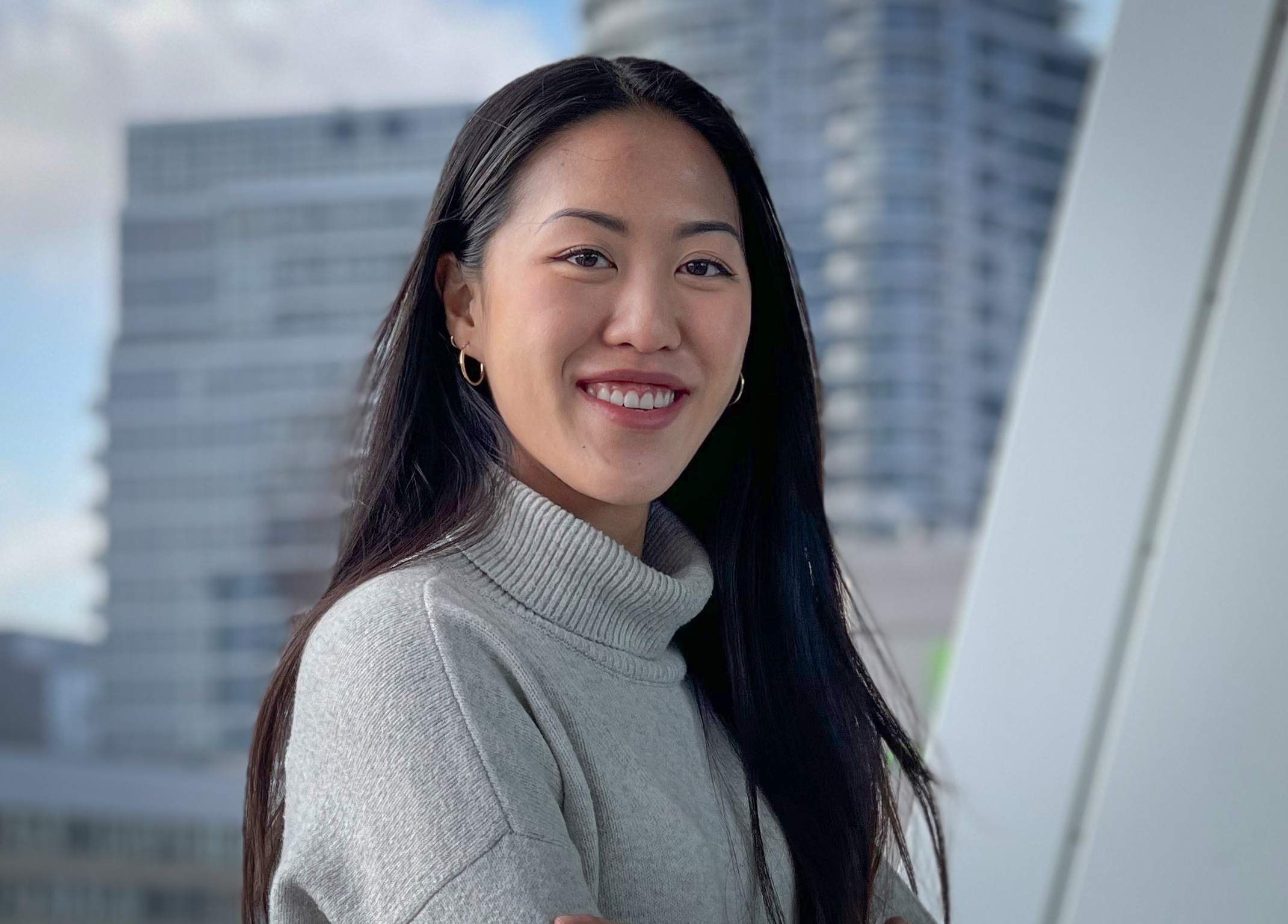
Gathering Place Now Open
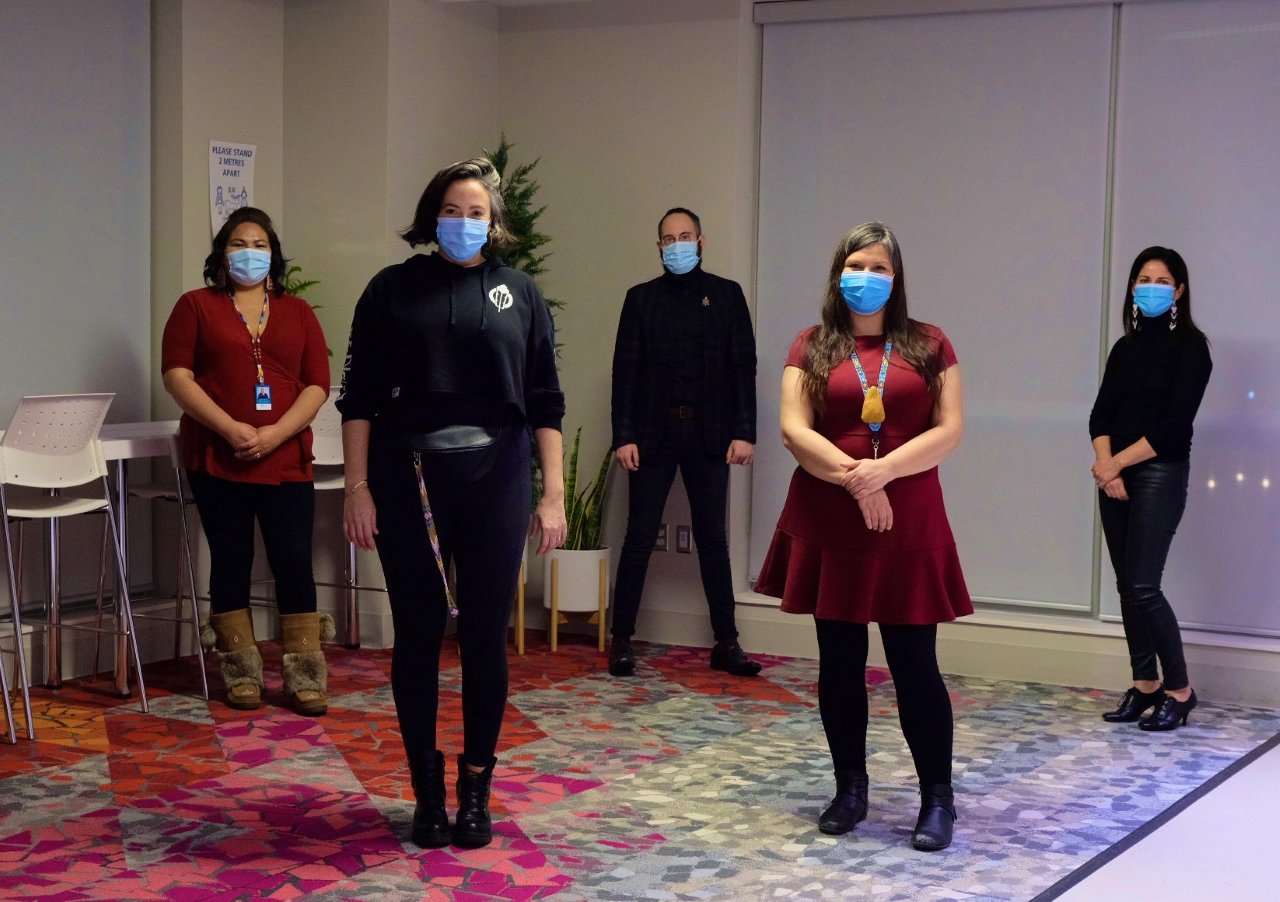 A new Gathering Place for health professions learners, faculty and staff to learn about and honour Indigenous perspectives of well-being and healing is now officially open at Women’s College Hospital (WCH). A virtual tour and welcoming ceremony was held on Tuesday, November 17th.
A new Gathering Place for health professions learners, faculty and staff to learn about and honour Indigenous perspectives of well-being and healing is now officially open at Women’s College Hospital (WCH). A virtual tour and welcoming ceremony was held on Tuesday, November 17th.
The Gathering Place is a partnership between the Temerty Faculty of Medicine’s Office of Indigenous Health and the Centre for Wise Practices in Indigenous Health (CWP-IH) at WCH.
As part of the celebration, professors Lisa Richardson, Vice-Chair, Culture and Inclusion, for the Department of Medicine and Chase McMurren, Indigenous Medical Education Theme Lead for the MD Program were joined by Temerty Faculty of Medicine Dean Trevor Young and WCH President and CEO Heather McPherson.
“This is not just a physical space. The idea of having smudging, smelling sweetgrass and sage and hearing the drum song that represents the heartbeats of our mothers is an act of decolonizing a space and an institution. It’s also about creating figurative space in these institutions, which have been so unwelcoming,” said Richardson, who is also the Strategic Lead in Indigenous Health for Temerty Faculty of Medicine and Women’s College Hospital. “It is about a place where Indigenous people can come and feel safe and at peace, valued, loved and respected and where Indigeneity is uplifted and celebrated.”
“Let’s consider how we can all create more safety for Indigenous People to come forward and be welcome to share their gifts and Sacred Medicines with one another and with all of us,” said McMurren. “In order to have safety, we all need to have humility and bring as much humble presence as possible, acknowledging that we all have work and healing to do.”
Kawennanoron (Cindy White), Rosary Spence and Kateri Gauthier performed the opening and closing drum and songs as well as the invocation.
The Gathering Place will help improve the experience for Indigenous learners by providing a culturally safe space to come together, socialize and study.
Elders, Knowledge Keepers, educators and community supports will be available to engage ceremonial practices, provide access to traditional medicines and facilitate educational and community-centred activities such as healing, counselling, workshops and symposiums.
The Gathering Place will also host learner and faculty meetings, talking circles and academic activities.
The creation of the Gathering Place one of the actions Temerty Medicine is taking to respond to the Truth and Reconciliation Commission of Canada’s Calls to Action as well as University of Toronto’s TRC Steering Committee, Answering the Call Wecheehetowin.
The official opening was celebrated during University of Toronto’s Indigenous Education week, which runs from November 16 to 20th.

Optimize this page for search engines by customizing the Meta Title and Meta Description fields.
Use the Google Search Result Preview Tool to test different content ideas.

Select a Meta Image to tell a social media platform what image to use when sharing.
If blank, different social platforms like LinkedIn will randomly select an image on the page to appear on shared posts.
Posts with images generally perform better on social media so it is worth selecting an engaging image.
Erin Howe

